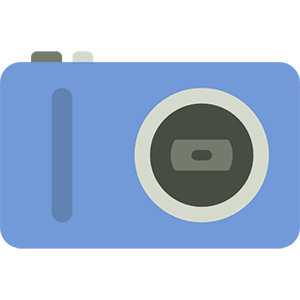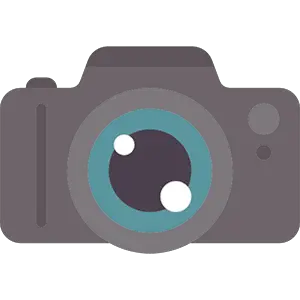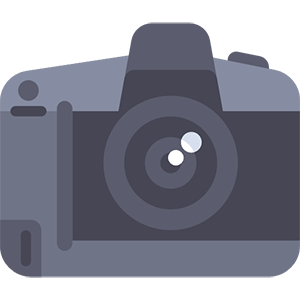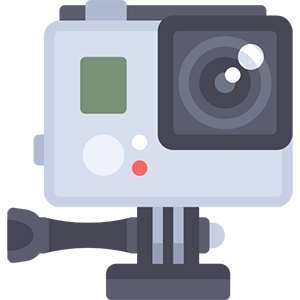INTRODUCTION
WHICH CAMERA IS THE BEST?
Welcome to a guide on how to choose a camera. Want to get started with photography, but have no idea which camera to buy? There are hundreds of cameras and many different types in the world now – It is no wonder people get so lost in choosing their new camera equipment. Good for you rich people, you can just “gotta buy em all”. But as for the rest of us poor folks, we have to choose one camera and stick with it for a long time.
This is what the guide is all about, helping you to choose a good camera and not regret buying it. A small note before we begin though – this is a beginner friendly guide. I will mention a few basic things briefly in this guide. For those of you who are a little more advanced, you might want to skip those sections.
NAVIGATION
TABLE OF CONTENTS

Step 1 |

Step 2 |

Step 3 |

Step 4 |

Closing |
STEP 1
YOURSELF & THE GENERIC REQUIREMENTS
 The first step of buying a new camera always starts with establishing your own needs – Because this is all about you, this is your photography. What are your generic requirements? What do you want to do next with that camera?
The first step of buying a new camera always starts with establishing your own needs – Because this is all about you, this is your photography. What are your generic requirements? What do you want to do next with that camera?
YOUR KIND OF PHOTOGRAPHY
This is the easiest and hardest question for yourself. What do you want to do with photography? Just a simple camera for casual shots? A heavyweight camera for professional work? Somewhere in-between casual and work? Or maybe even “I don’t know, I want to try a bit of everything” – By all means, that is fine as long as you have a baseline on what you need.
WHAT ARE THE REQUIREMENTS?
Now that you know what you are going to do with the camera, it’s time to establish for yourself what you need exactly. For example :
- I am into underwater photography, waterproofing is a must.
- Just for some casual shots, a simple camera will do.
- I travel quite a lot, the camera must not be too heavy but still decent.
- Going to study photography, then go professional. Need some heavy guns.
- I want to shoot some videos; a video function is a must.
WHAT KIND OF BUDGET?
I understand, you may not know the market very well yet, but you still need to set aside some money for the camera. My recommendation is to set aside US$500 to $800 if you are going for simple gear. Casual shooters who want a decently good camera should spend about US$1000 to $1500. For those of you who are going “heavy guns”… prepare to burn a hole in your pockets.
P.S. Don’t worry if you do not have a lot of budget and want to get started with photography. There is always the option buying used cameras for a bargain.
STEP 2
THE DIFFERENT TYPES OF CAMERA
 Now armed with a baseline of what you want, it is time to choose a camera – Big gun or small portable one? Which camera suits your needs? What kind of specs do you need? What functions?
Now armed with a baseline of what you want, it is time to choose a camera – Big gun or small portable one? Which camera suits your needs? What kind of specs do you need? What functions?
DIGITAL & ANALOGUE
Before we carry on with this step, you should be aware that there is something called “digital camera” and “analog camera” these days. But just what are those!?
Analog cameras simply mean the traditional film and mechanical cameras, while “digital cameras” are the more modern electronic cameras that use memory cards instead. So please take note – This guide is about helping you to choose a digital camera.
Not that analog cameras are bad, and they still have their own charm. But as this world is moving towards digital, it only makes more sense for this guide to focus on the digital cameras.
THE DIFFERENT TYPES OF DIGITAL CAMERAS
The first consideration for choosing a digital camera is the “type of camera”. Digital cameras these days come in all shapes and sizes, but in general, there are only a few kinds. So go choose your weapon – big gun or small and portable?

COMPACT CAMERA
Size and weight: Small size, lightweight. Some may even fit into your pocket.
Capability: The lens for compact cameras are typically fixed and cannot be changed. Generally does not have a “manual mode” either, just full auto, point-and-shoot. Not really fantastic in terms of performance. Decent image quality, decent lens, just something better than your camera phone.
For: Those of you who want to have a better camera than your phone, not too much weight to carry around, and don’t care about the technical bits. Not much of a performer, but good for casual photos.

MIRRORLESS MICRO 4/3
Size and weight: Decent size, not too heavy, not light either.
Capability: The next “big thing” in the photography world. These babies are what I call “very big smartphone cameras with an interchangeable lens but you cannot make calls nor access the Internet with it”. Full manual controls and the performance ranges from decent to excellent (depending on which model you buy).
For: Those of you who want a good capable camera without all the weight. The lens can be changed, so you can try out a bunch of different things. Be warned though, these are not cheap toys.

DSLR
Size and weight: Ranging from not-too-heavy for the starters, to heavy and bulky for the professional series.
Capability: Performance ranges from “decent” to “excellent” again, depending on which model you buy… along with the lens you chose. Capable of shooting almost anything, DSLRs are the good old workhorse in the photography industry.
For: People who are serious about photography, don’t quite mind the weight. Wants the flexibility to go into different fields and good performance.

ACTION CAMERA
Size and weight: Small and very lightweight, fits into your pocket.
Capability: Don’t let these tiny boxes fool you. Check out “Go-Pro” and these cameras have been used in live shows, underwater, mounted on drones and some rather extreme cases. Given its size, it still produces decent images and videos.
For: More video than a still camera, for those of you who are adventurous. If diving and skydiving sound good to you, this is made for you.
STEP 3
CONSIDER THE CAMERA SPECIFICATIONS
 Now that you have both the basic requirements and type of camera in mind, it is time to go into the nitty-gritty specifications of the camera. Yes, it is sort of painful for beginners to not understand anything about the technical parts, so I will walk you guys through a few of those important points.
Now that you have both the basic requirements and type of camera in mind, it is time to go into the nitty-gritty specifications of the camera. Yes, it is sort of painful for beginners to not understand anything about the technical parts, so I will walk you guys through a few of those important points.
THE BRAND
Is the brand really that important? Well, the debate between Nikon vs Canon has now evolved into Nikon vs Canon vs Sony. My take is that the argument will never end, and it makes more sense to look at what each brand has to offer instead. After all, each company has produced some excellent products and some pretty lousy ones too.
But know that once you are stuck with a certain brand, it will be hard to make a switch. Decide, after you look at the products line-up and lenses available. Look at their build, quality, and performance history. Listen to the feedback of photographers who have already used the camera for years… Not some random ramblings of a fanboy.
THE BUILD/CONSTRUCT OF THE CAMERA
Size: Don’t buy a huge DSLR and expect it to fit into your pocket… unless you are a kangaroo or something.
Weight: How heavy is that camera plus the lens, plus any stuff you might be carrying around? If it is going to hurt you, then no.
Material: Most beginner DSLRs these days are made of cheap plastics, which is why they cost a lot lesser than the professional ones.
Mechanical/Software: That aside, listen to feedback, has anyone else had trouble with the camera you are looking at? Any mechanical failures? Software failure? Any particular quirks?
Design: Well, some people go for a particular camera because it looks good. Can’t stop them.
Ergonomics: What makes more sense for me is the ergonomics, and how the menu is designed. Shooting with a camera that does not look good, but easy to use is more important.
Weather Sealing: If you shoot outdoors a lot, make sure that the camera is weather sealed. Or you are going to have a hard time maintaining your camera when dust and water get in.
Waterproof: If you are planning to shoot underwater, look for cameras that are waterproof. Or look for cameras that have an underwater housing.
THE SPECS
Megapixels: How many megapixels do you need? At the time of writing, Mar 2018, most cameras are at least 12 megapixels or more. Some may think that is not enough, but think again… even at 5 megapixels, the image size is 2560 x 1920 pixels. That is close to a 2K screen, way better than full HD. A small reminder that more megapixels do not equate to better image quality anyway.
Image Quality: The image quality mainly depends on 3 things in a digital camera – Sensor, image processor, and lens. Learn to read some of these numbers.
- The sensor size. Technically, larger sensors are better, although new technology has come up with better small sensors. A “digital medium format” camera is one of the best you can get, but it costs a bomb.
- The dynamic range, or the ability of the camera to “differentiate” between the darkest and brightest spots. Technically, the larger the range the better. Since a larger dynamic range will allow you to capture more details.
- ISO sensitivity and signal-to-noise ratio (SNR). Electronic sensors are not perfect. In low light situations, they have to work harder to bring out details with limited light. This often results in noise (grainy images). A camera with higher SNR is preferred.
Lastly, when in doubt, use your own eyes to determine if you like the image quality.
Storage: Which card formats do the camera support? Does the camera have built-in memory and how large is it?
Battery Life: How long will the battery last and can the battery be replaced?
Frames per second: Not really that important, but if you are shooting action and fast-moving things, you will need a decent frame rate.
Auto-focus: How many auto-focus points are there? How fast and how accurate is the autofocus system?
Video and sound: Do you Vlog? Take short videos? Then look out for video features in the camera.
Wireless and GPS: This is a small plus. Some of those cameras that directly link to your smartphone and allow you to instantly post online just saves you a lot of trouble these days.
STEP 4
OTHER CONSIDERATIONS
 If you already have the gear that you want in mind, do not just jump in and slap a wad of cash on the counter. It does not hurt to listen to what others have to say first. It does not hurt to try things out first. What are the other people saying about your chosen cameras? What do the online reviews say? How about hands-on, try it for yourself first?
If you already have the gear that you want in mind, do not just jump in and slap a wad of cash on the counter. It does not hurt to listen to what others have to say first. It does not hurt to try things out first. What are the other people saying about your chosen cameras? What do the online reviews say? How about hands-on, try it for yourself first?
READ ONLINE REVIEWS
But don’t be lazy, there is no harm in doing some online research. Hop onto forums and groups to ask for feedback on the camera you have chosen. Watch YouTube videos and find some sample photos.
DON’T BUY FIRST, RENT OR BORROW
If you think that you have found your true love, try not to buy it first. Look for friends who have the gear, lend it and try it out. Rent it from a shop if you have to. The most important thing is, you need to be sure that you will not regret buying it. Just don’t be pressured to buy on the spot, give yourself time to check out a bunch of different alternatives first.
THE SALESPERSON IS NOT YOUR FRIEND
Now to the last point. Remember, the salesperson is not your friend… unless you know him/her personally. They are often there to sell things, not to make sure that you get the best camera for your needs. Go make some friends with experienced photographers instead. They make good recommendations and are your free coaches. 😆
BUSTING THE GOOD EQUIPMENT MYTH
This is not really related to choosing a camera, but I think a necessary point to make. Buying a new camera does not make you a better photographer. Equipment will not turn you into instant masters, only your own willingness to learn and develop your skills will get you there one day.
The camera is nothing but a tool. The man who is handling the camera is the ultimate winner. Just don’t buy a camera, thinking that it will make you into an instant kung-fu master.
CLOSING
SPEND IT OR SAVE IT?
 We have come to the end of this guide, and I shall share my last piece of thought/advice. If you have just started out with photography, do give careful thoughts before buying your first camera. Don’t just consider stuff at the moment, but also what you want to do in the future.
We have come to the end of this guide, and I shall share my last piece of thought/advice. If you have just started out with photography, do give careful thoughts before buying your first camera. Don’t just consider stuff at the moment, but also what you want to do in the future.
I picked up a rather simple compact camera when I first started photography, and quickly realized that I “outgrew” it. I wanted to do so much more and changed to a DSLR just a year later… and even after that, I upgraded yet again after a few years.
That ended up with spending more than I should, and I probably should have just started with a mid-range DSLR instead. So this is what I will recommend to you guys who are serious – Don’t waste your time and money. Just buy a good camera and keep it for 10 years.
That’s it for this long guide. As a “final gift”, I have summarized everything into one cheat sheet. Choosing a good camera is definitely not an easy decision, but I hope this guide has helped you. Cheers, and happy shooting!
